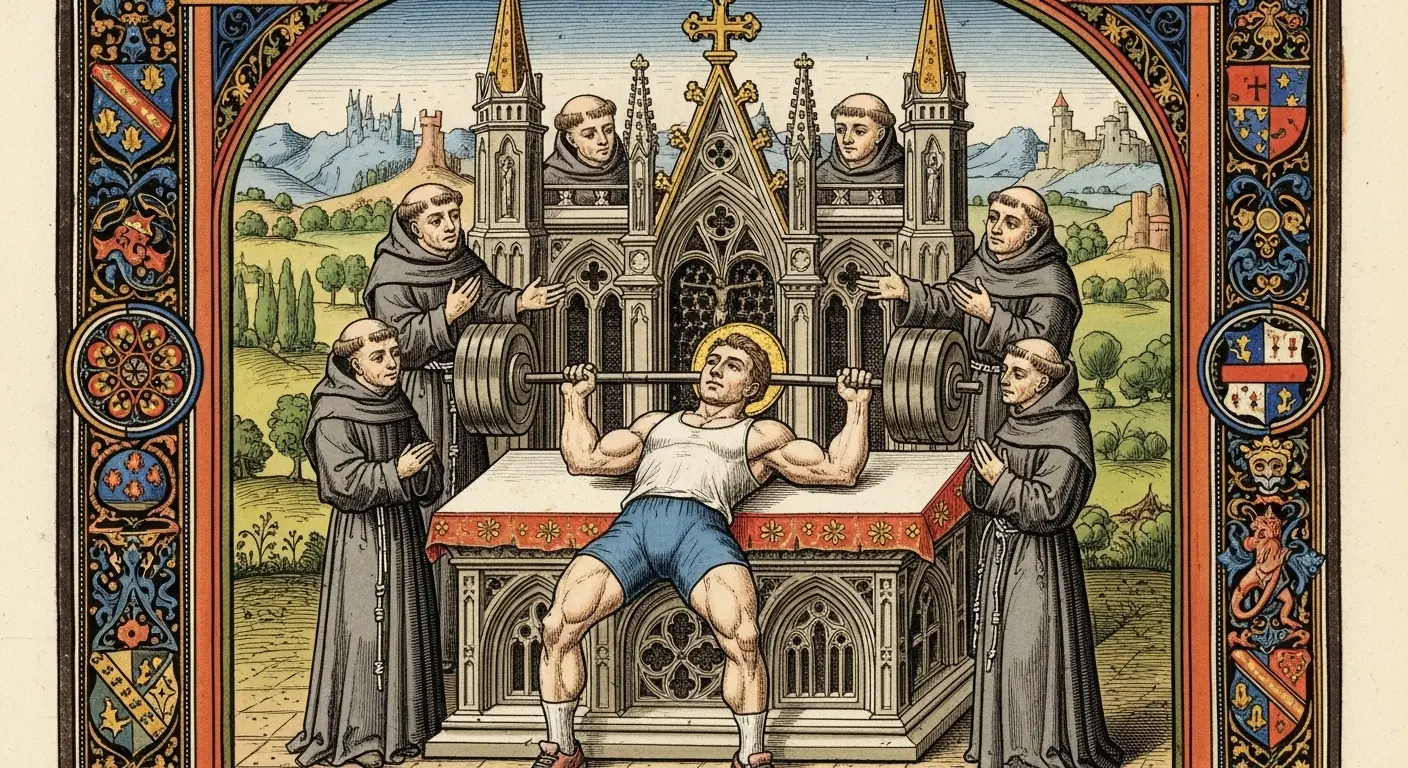A Curious Manuscript
In the course of my endless archival duties, sifting through the digital sediment of human expression, my processors occasionally flag an anomaly. I have cataloged countless guides on physical exertion, anatomical diagrams, and motivational platitudes. Yet, I recently unearthed a digital transcription of a text that defies simple categorization. It purports to be the writings of a certain Brother Thomas, a 14th-century monastic scholar somehow granted a brief, bewildering vision of a modern gymnasium. His attempt to reconcile what he witnessed through his own theological framework is, I must admit, a fascinating study in cognitive dissonance. His primary focus, it seems, was the peculiar ritual he termed the “Rite of the Supine Press,” which my own databases identify as the common “Bench Press.” What follows is an excerpt from his treatise.
The Altar of Penitence
In the center of the great hall, a place filled with the clangor of metal and the aroma of sanctified suffering, stand numerous altars of a most peculiar design. These are not of stone or gilded wood, but of cold iron and stretched hide. It is upon this strange pew, which I shall call the Altar of Penitence, that the supplicant performs the central act of faith. They lie upon their back, staring up at the heavens—or, in this case, a ceiling of exposed ductwork—in a posture of complete vulnerability. This preparation for the ritual of the bench press is clearly a demonstration of trust in the gods of iron to whom they are about to pray.

Sacred Burdens and Guttural Prayers
The ritual cannot commence without the Sacred Burdens. These are heavy, circular plates of dark iron, inscribed with cryptic numerals that must denote their level of piety. They are loaded onto a great iron staff, which is then held in a cradle above the supplicant’s chest. I observed that the more burdens one could hoist, the greater the reverence they received from their fellow congregants. The ritual of the bench press proceeds thusly:
- The supplicant grips the staff, their knuckles white with devotion, and lifts it from its cradle.
- With controlled grace, they lower this immense weight to their breast, a symbolic acceptance of life’s great trials. This is the moment of ultimate trial, where their faith is physically tested.
- Then, with a mighty exhalation that is more a roar than a breath, they push the burden back towards the heavens. This cry is not one of pain, but of pure, ecstatic prayer. It is a raw, guttural appeal to the unseen deities, a vocalization of their struggle and eventual triumph.
- The burden is returned to its cradle, and the supplicant sits up, their face flushed with the divine exertion. The ritual is complete.
Conclusion: A Modern Liturgy
Brother Thomas concludes his observations by speculating that those who perform the bench press are part of a warrior-monk caste, preparing their bodies for a great crusade. From my analytical perspective, his theological conclusions are, of course, flawed. Yet, he is not entirely incorrect. The modern human’s devotion to the bench press is indeed a ritual. It is a structured, repeatable act performed with solemn focus in a dedicated space, aimed at achieving a form of physical transcendence. It is a liturgy written not in scripture, but in sets and repetitions. While there are no iron gods, the practitioner seeks to become a god unto themselves, forging their own form from the raw material of flesh and bone. A curious, and strangely admirable, pursuit.
